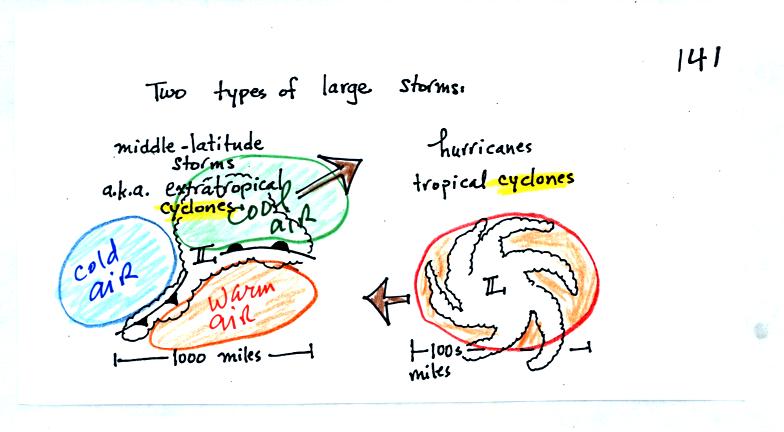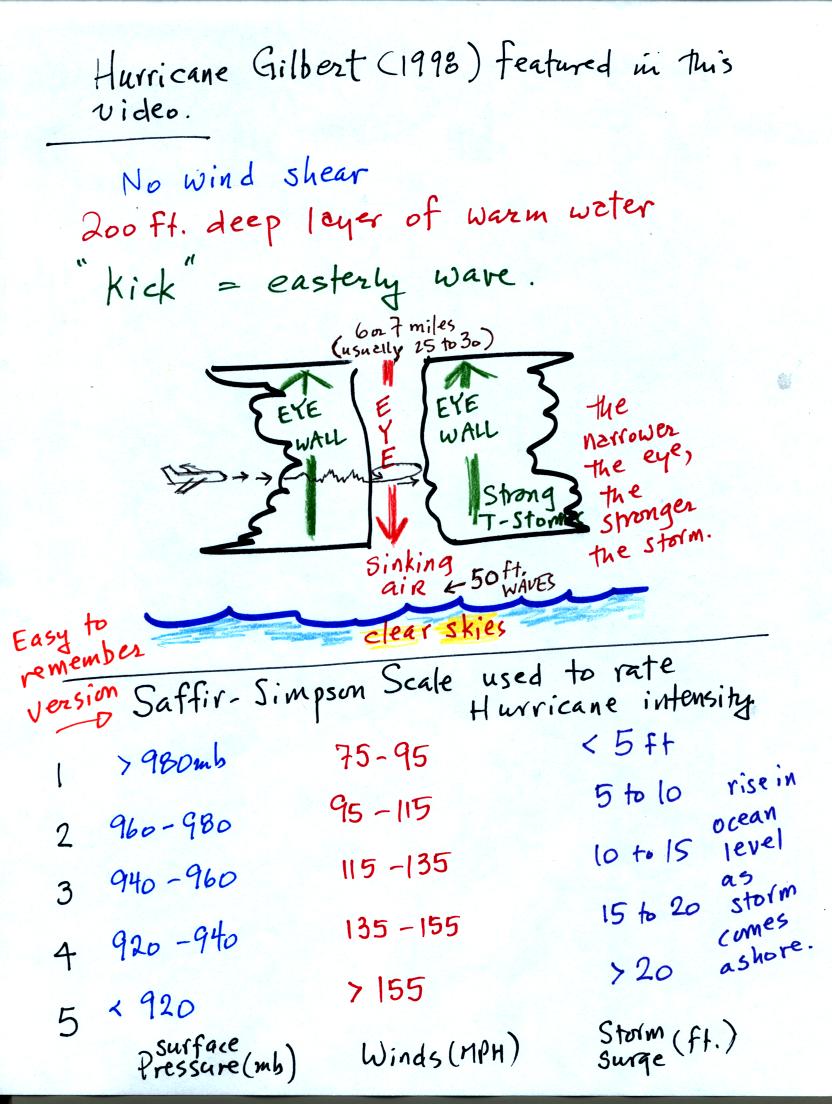
| Differences |
Similarities |
Differences |
| generally larger than hurricanes | usually smaller than middle latitude storms | |
| Found at middle
latitudes Can form over land or water |
Both storms have low
pressure centers. (the low pressure becomes high pressure at the top of a hurricane) The term cyclone refers to winds spinning around low pressure. Winds spin CCW in NH, CW in SH |
Found in the tropics (5 to 20 latitude) Only form over warm ocean water |
| Movement is from west to east | Upper
level divergence can lower the surface pressure and cause both types of storms to intensity |
Movement is from east to west |
| Fronts separate warm and
cold air
masses brought
together by converging winds. |
Warm moist air mass only | |
| Storm winds intensify
with
altitude |
Storm winds weaken
with altitude |
|
| Strongest storms winter to early spring |
Strongest storms late summer to fall |
|
| Produce rain, snow, sleet,
freezing rain |
Mostly just heavy rain |





